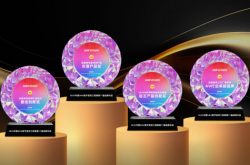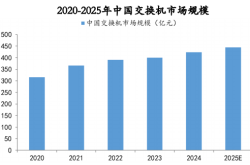Xiaomi Soars with 70% Net Profit Growth in Q2; Electric Vehicle Business Scores a Remarkable Turnaround
![]() 08/21 2025
08/21 2025
![]() 578
578
In just one quarter, Xiaomi Automobile catapulted from obscurity to the top ten in global pure electric vehicle sales, reshaping industry norms at an astonishing pace.
According to Xiaomi Group's impressive performance report, the company's revenue for the first half of 2025 amounted to 227.249 billion yuan (RMB, henceforth), marking a 38.2% increase from 164.4 billion yuan in the corresponding period last year.

From battling in the smartphone market to witnessing the AIoT business surpass smartphones in profit contribution, to the impending profitability inflection point in the electric vehicle segment, this tech giant's cross-border journey is fast becoming a case study in business textbooks.
The electric vehicle business has emerged as a star performer, staging a remarkable turnaround from losses to profits.
The financial report highlights that alongside revenue growth in the first half, profitability also surged simultaneously. Xiaomi recorded a gross profit of 51.5 billion yuan in the first half of 2025, up 46.2% from 35.224 billion yuan in the same period last year.
Moreover, the period profit stood at 22.766 billion yuan, a 146.3% increase compared to 9.243 billion yuan in the same period last year; net profit, excluding non-recurring gains and losses, was 21.5 billion yuan, a 69.8% jump from 12.666 billion yuan in the same period last year.
Notably, in the second quarter of 2025, Xiaomi achieved revenue of 115.956 billion yuan, up 30.5% year-on-year and 4% quarter-on-quarter from 111.3 billion yuan, surpassing Morgan Stanley's expectations by 3%. This marked the third consecutive quarter with revenue exceeding 100 billion yuan.
This robust performance is primarily attributed to the explosive growth of the electric vehicle business. After more than three years of substantial investments, this strategic venture, which Lei Jun refers to as his "last adventure," has finally reached a critical turning point for scaled growth.
Data reveals that Xiaomi's electric vehicle business revenue skyrocketed 233.9% year-on-year in the second quarter, hitting 21.3 billion yuan, accounting for 18.3% of total revenue. This figure far exceeded market expectations, making it the third largest revenue source after smartphones and the AIoT business.
Even more encouragingly, the electric vehicle business's gross margin reached 26.4%, a notable 3.3 percentage point increase from the previous quarter, signaling promising profit prospects.
Specifically, the significant improvement in Xiaomi's electric vehicle business profitability is mainly due to the continuous optimization of the product mix and the steady rise in average selling prices.
In the second quarter of 2025, the average unit price of Xiaomi's smart electric vehicles reached 253,662 yuan per vehicle, a 6.4% increase from the previous quarter, primarily driven by the contributions of the SU7 Ultra and YU7 high-end models.
Lu Weibing also stated that the YU7 series has continued the SU7's impressive performance, "once again creating a Xiaomi hit miracle," and the company has decided to officially enter the European electric vehicle market in 2027.
Furthermore, Xiaomi delivered 81,300 electric vehicles in the second quarter, a 197.7% increase compared to 27,300 vehicles in the same period last year. Since the launch of Xiaomi Automobile in July 2025, cumulative deliveries have surpassed 300,000 units, with monthly deliveries exceeding 30,000 units for the first time in July.
In response, Morgan Stanley analysts believe that following the strong orders for the YU7 model, electric vehicle deliveries will be a key driver of share price in the second half of the year. With the continuous ramp-up of production capacity at the Beijing plant, the delivery pace is expected to further accelerate.
Additionally, Xiaomi Automobile added 37 stores in June, bringing the total number of stores nationwide to 335 across 92 cities, signifying the beginning of a well-formed sales and service network.
Ecological Synergy Effects Manifest, Deliveries Become a Key Catalyst in the Second Half
Xiaomi's second-quarter 2025 financial report unveils a landmark turning point, with the AIoT business (Internet of Things and consumer products) gross margin reaching 16.876 billion yuan, surpassing that of the smartphone business (gross margin of 11.502 billion yuan), thereby becoming Xiaomi Group's primary profit contributor.
Concurrently, AIoT business revenue increased by 50.7% year-on-year to 71.051 billion yuan, setting a new record high.
This structural shift signifies Xiaomi's successful transformation from a single mobile phone manufacturer to an ecological technology group with coordinated development across multiple businesses. Its strategic layout of "mobile phone × AIoT × smart car" has begun to exhibit strong synergistic effects.
Smart home appliances have emerged as the core engine driving AIoT growth. In the second quarter, Xiaomi shipped over 5.4 million air conditioners, witnessing a year-on-year growth rate exceeding 60%; over 790,000 refrigerators, with a year-on-year growth rate exceeding 25%; and over 600,000 washing machines, with a year-on-year growth rate exceeding 45%.
As Xiaomi's foundational business and the core entry point of its ecosystem, smartphones exhibited a complex trend of "stable volume and falling prices" in the first half of 2025.
In the second quarter, Xiaomi's total smartphone revenue was 45.5 billion yuan, accounting for 39.3% of its total revenue. It achieved year-on-year growth in shipments for eight consecutive quarters, with a global market share of 14.7%, ranking third globally for 20 consecutive quarters and in the top five in smartphone shipments in 69 countries and regions worldwide.
According to third-party data, in the domestic market, Xiaomi activated 11.5 million new phones in the second quarter, leading the domestic market with a share of 16.8%.
However, impacted by the sluggish global smartphone market, Xiaomi's smartphone revenue dipped slightly by 2% year-on-year in the second quarter, and the gross margin decreased from 12.1% in the same period last year to 11.5%, reflecting the industry's fierce competition.
Xiaomi's breakthrough in China's high-end markets has become a highlight of its smartphone business. According to 21st Century Business Herald data, Xiaomi's sales share of high-end smartphones (above 4,000 yuan) in mainland China reached 27.6%, up 5.5% year-on-year; its market share in the 4,000-5,000 yuan price segment was 24.7%, ranking first domestically; and its market share in the 5,000-6,000 yuan price segment was 15.4%, up 6.5% year-on-year.
This dual-track strategy of "preserving market share in the mid-to-low end and increasing profits in the high end" has enabled Xiaomi to maintain a relatively stable fundamental position amidst fierce competition.
In the market environment where the smartphone industry as a whole has entered a stock market game, Xiaomi has effectively mitigated the pressure of slowing growth in the mobile phone business through a diversified business layout, achieving steady overall performance growth.
Conclusion
In 2025, the synergistic effects between Xiaomi's various business segments began to manifest. The development of the automotive business has fed back into the mobile phone and AIoT businesses, forming a virtuous cycle.
The successful brand momentum created by the automotive business has a clear pulling effect on the mobile phone business. Simultaneously, Xiaomi has achieved deep interconnection and interoperability between devices through breakthroughs in underlying technologies such as self-developed chips and large models. This technology-driven ecological synergy constitutes Xiaomi's core competitiveness, distinguishing it from traditional hardware manufacturers.
Looking at Xiaomi's performance in the first half of 2025, one can clearly discern the outline of a technology company transitioning from a "hardware company" to an "ecological company." Amidst an environment of heightened uncertainty, Xiaomi has demonstrated robust risk resistance and growth resilience through diversified layouts and ecological synergy, providing a commendable model for the transformation and upgrading of technology companies.








